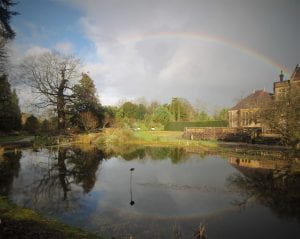In June this year I went on holiday to Georgia, a country with diverse cultural and geographic influences; its links with Europe to the west and Asia to the east made it a perfect corridor for silk route traders. Along the north of Georgia run the High Caucasus, a thousand-kilometre range of mountains that border Russia, and Azerbaijan. The mountains are an almost impenetrable barrier, few roads link Russia and Georgia, the military highway in the Kazbegi region, the Ossetian military road, and Transcaucasian highway; in Georgia there are two disputed territories that are effectively governed by Russia, Abkhazia and South Ossetia, and two of these highways run through South Ossetia. After a short but brutal conflict in 2008, thick rolls of barbed wire were placed along the disputed areas in a process known to Georgians as borderisation; siblings, family, and friends were cut off from each other, many haven’t seen each other since. Occasionally, overnight, the barbed wire will be moved further onto Georgian land as a provocative move, a way of unsettling Georgians. Georgian people are nervous of the future; political moves and Russian rhetoric make them so. When you talk to them, they are fiercely patriotic. They want to cling on to what they have, and what they have is beautiful. (more…)
Author: andy.winfield
Garden marketing
By Sezin Topaloglu: BSc Marketing 2nd year
As a part of my 2nd year Marketing degree at the University of Bristol, I am excited to say that I’ve completed my social media placement at the University of Bristol Botanic Garden. It has been an incredibly comprehensive and invaluable experience, significantly enhancing my social media skills and deepening my knowledge of plants. Throughout this placement, I engaged in a variety of tasks that allowed me to develop a strong understanding of content creation and social media strategy. (more…)
Staying connected
By Andy Winfield
 I’m currently reading Braiding Sweetgrass for the second time, this time as an audiobook. For those that haven’t read it, it’s a series of essays and memories from Robin Wall Kimmerer; an academic and botanist of Native American heritage. She says of the book, “I wanted readers to understand that Indigenous knowledge and Western science are both powerful ways of knowing, and that by using them together we can imagine a more just and joyful relationship with the Earth”. Reading this book makes me feel very happy; it taps into something that is lost but was so important to humans for thousands of years all over the world, a connection to the seasonal changes, the life around us, and a respectful coexistence. (more…)
I’m currently reading Braiding Sweetgrass for the second time, this time as an audiobook. For those that haven’t read it, it’s a series of essays and memories from Robin Wall Kimmerer; an academic and botanist of Native American heritage. She says of the book, “I wanted readers to understand that Indigenous knowledge and Western science are both powerful ways of knowing, and that by using them together we can imagine a more just and joyful relationship with the Earth”. Reading this book makes me feel very happy; it taps into something that is lost but was so important to humans for thousands of years all over the world, a connection to the seasonal changes, the life around us, and a respectful coexistence. (more…)
Making time stand still for a moment
 By Andy Winfield
By Andy Winfield
So, we’re at 2024, which seems a bit weird. 2020 seemed like it would never end, and now time is swishing by. Marking duration with dates and times is now baked into our way of existing; getting somewhere by a certain hour and organising an event for a particular date is how our lives work. St Augustine wrote in 400AD “No time is wholly present, all time is forced on by the future”. That was said a long time ago, and that idea has only accelerated. Humans today, myself included, are constantly looking ahead to the next thing, squeezing ever onwards. But what about now? What about the present? In the natural world, and the Botanic Garden, there are moments that aren’t defined by our perceptions of time; these moments give us opportunities to disembark the time train for a moment, and observe what’s happening right now, in the present. (more…)


